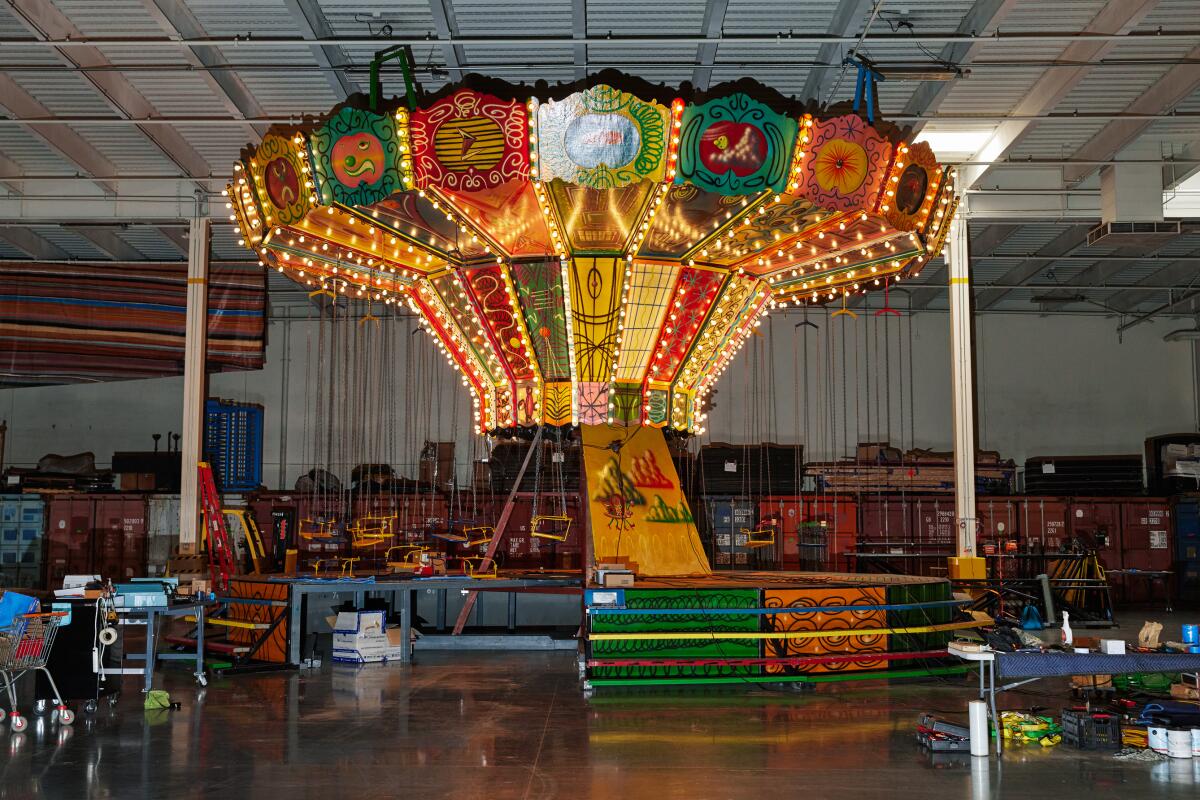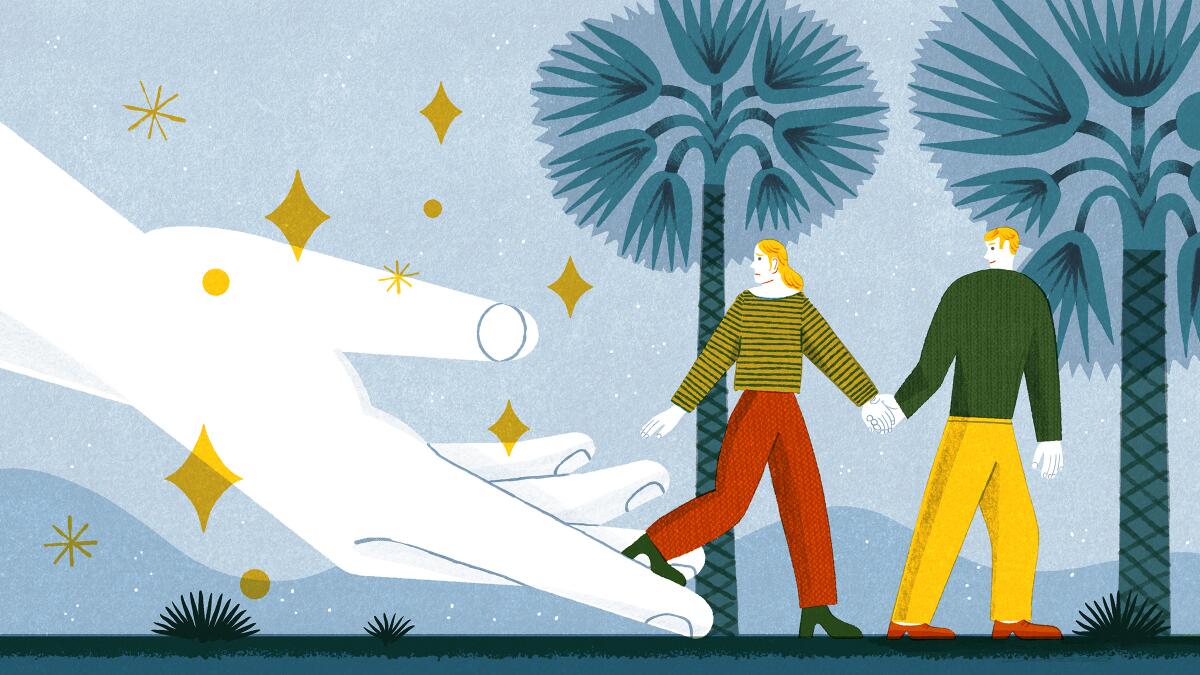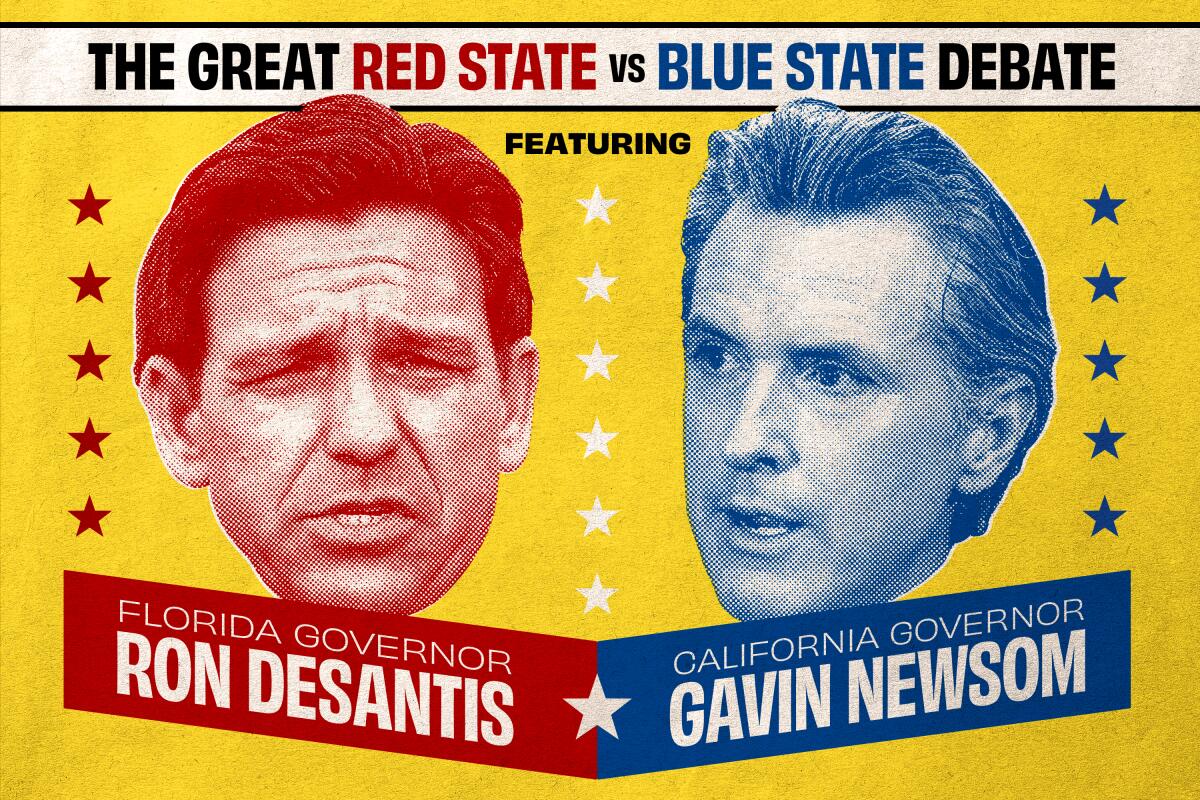The science behind giving bad gifts

- Share via
Good morning, and welcome to the Essential California newsletter. It’s Saturday, Dec. 2. Here’s what you need to know to start your weekend:
- Our ultimate gift guide can help you prep for the holidays.
- Newsom defended his confusing debate with DeSantis as a necessary evil.
- Asian American families are more stressed than ever about college admissions.
- And here’s today’s e-newspaper.
Sign up for Essential California
The most important California stories and recommendations in your inbox every morning.
You may occasionally receive promotional content from the Los Angeles Times.
The science behind getting the wrong gift
It is the season of high hopes, great expectations and, honestly, grave disappointment, L.A. Times columnist Robin Abcarian wrote two years ago. That’s because more often than we’d like to admit, we are giving or receiving gifts that are just not quite right. Abcarian goes on:
You probably won’t be surprised to learn that there is actually a body of research that addresses the widespread phenomenon of present resentment, which is called “miscalibrated gift choice” or “self-other mismatch.”
Turns out that a gift rift is not a trivial thing. (Just ask my ex.)
Giving gifts, not tasks
One common reason for this miscalibration is that givers and receivers come to a gift from different perspectives, former Times staffer Melissa Healy wrote in 2016. Givers tend to think about the surprise and joy a receiver might have upon opening a gift. Receivers tend to consider the long-term implications of owning the gift.
(I often think to myself: That’s not a gift, that’s a task.)
“Givers should choose gifts based on how valuable they will be to the recipient throughout his or her ownership of the gift, rather than how good a gift will seem when the recipient opens it,” wrote the authors of a study titled “why gifts are great to give but not get.”
Getting nothing in return
They say that the whole point of a gift is that it is given, and given freely. And while the gracious gift givers in your life may claim they do not notice or care if they aren’t getting gifts in return, I don’t buy it.
Reciprocity is implicit in most gift giving. Invite somebody over for dinner? The etiquette is to get a return invite in some way or another, or at least a bottle of wine.
This is what makes this season so stressful and difficult. We’re not just gift-shopping. We are proving to ourselves and our loved ones the value of the bonds we share, and engaging in a delicate dance to find something that fits the person, and fits our perceptions of their feelings toward us, too.
It’s not just gift giving. Researchers have shown that our entire social order is implicitly and explicitly built around reciprocity.
It’s better to give than to receive
Set aside the extreme commercialism of the holidays for one second and consider: A study from earlier this year found that gift giving improves the mood and well being of the giver, and can reduce feelings of loneliness.
That’s one reason I’d guess the practice of giving gifts transcends cultures.
Types of gifts can vary worldwide, but the meaning is often the same, Patricia Ward Biederman wrote in a 1990 L.A. Times story: to symbolize who people are and where they belong.
You didn’t ask, but here’s my advice:
- Drop elaborate surprises: Sure, we all dream of giving the perfect surprise gift. Give it up. There’s a reason society has, for generations, created an elaborate ruse to trick children into writing wish lists for Christmas. How else would we know what they want?
- Keep it simple: A card with a few heartfelt sentences can go a long way and takes seconds to write.
- Get on the same page: You can eliminate the possibility of mismatched gifts by establishing ground rules such as financial limits, categories, hand-made-only, or whatever.
Most important: Use the L.A. Times gift guide.
- 80 wonderful gift shops you can find only in L.A.
- 16 tech gifts for the gadget-obsessed people in your life.
- 22 delightful gifts that put Amazon to shame.
- 18 gifts for people who cherish experiences over things.
The week’s biggest stories
Newsom vs. DeSantis
- The surprising answer to whether California or Florida handled COVID better.
- Fox News’ Sean Hannity on his unlikely relationship with Gavin Newsom: ‘We just hit it off.’
- 4 takeaways from the Newsom-DeSantis debate on Fox News.
- Newsom defended the confusing debate as a necessary evil.
Michael Latt killing
- A marketing consultant and social justice advocate with strong ties to Hollywood was killed in his home, law enforcement sources told The Times.
- The woman charged in his killing had stalked and threatened a film director, records show.
Golden Bachelor finale
- Gerry Turner speaks on ‘The Golden Bachelor’ finale and its two endings: One happy, one brutal.
- Edith Aguirre talks about finding love, embracing age and her iconic hair.
Higher education
- Post-affirmative action, Asian American families are more stressed than ever about college admissions.
- Cal Poly Humboldt students live in vehicles to afford college. They were ordered off campus.
More big stories
- What day laborers are hired to do: the dangerous, the gross, the sometimes illegal.
- New express lanes on the 405 in northwest Orange County are finally open after almost five years of construction and $2 billion.
- Anthony Bourdain’s scathing Henry Kissinger remarks resurface after foreign policy figure’s death.
- Felicity Huffman says college admissions scandal was ‘only option’ to help her daughter.
Get unlimited access to the Los Angeles Times. Subscribe here.
The week’s great reads

A killer whale punted a sea lion 20 feet in the air to show calf how it’s done. Based on the whales’ behavior, an expert said it appeared the orcas were training a new calf in the pod how to hunt with its mother, grandmother and aunt.
More great reads
- The Black Los Angeles I grew up with is slipping away
- The depressing fall of Sports Illustrated reveals the real tragedy of AI.
How can we make this newsletter more useful? Send comments to [email protected].
For your weekend

Going out
- Drake bought a fantastical, forgotten amusement park made by famous artists. It’s opening in L.A. this winter.
- 30 dazzling holiday light displays that make SoCal shine.
- The best movies to see in L.A. this week.
Staying in
- HBO’s ‘Love Has Won’ shows how cult leader Amy Carlson went from McDonald’s manager to mummy.
- 🧑🍳 Here’s a recipe for lemon upside-down cake.
- ✏️ Get our free daily crossword puzzle, sudoku, word search and arcade games.
L.A. Affairs
Get wrapped up in tantalizing stories about dating, relationships and marriage.

I wanted to date my mentor’s colleague. Was that a problem? I was thankful for romantic love, but mentorship and friendship were huge loves too. I found a mentor in L.A. Unfortunately our relationship changed.
Have a great weekend, from the Essential California team
Elvia Limón, multiplatform editor
Karim Doumar, head of newsletters
Check our top stories, topics and the latest articles on latimes.com.
Sign up for Essential California
The most important California stories and recommendations in your inbox every morning.
You may occasionally receive promotional content from the Los Angeles Times.





